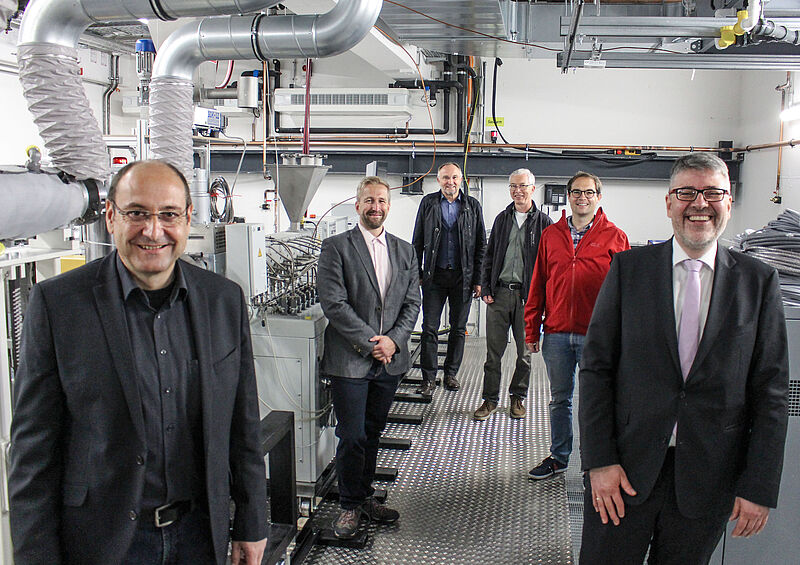"Industrial Manufacturing in North Rine Westphalia" (iAMnrw-Materials), this project bundles the competences of Kunststofftechnik Paderborn (KTP) and the Particle Technology Group (PVT) as well as the Chair of Materials Science (LWK) for another project on the production of metal powders and is centrally located at the Paderborn Institute for Additive Manufacturing (PIAF).
High-pressure tanks with carbon dioxide and nitrogen, filter technology systems, extensive ventilation systems - all this is located in the two-story laboratory, which was converted for the special research orientation of the project. In the future, not only new processes will be developed here for manufacturing plastics in powder form, but entirely new materials will be opened up for the laser sintering process. "Currently, the production of plastic components using additive manufacturing is mostly limited to Polyamid, variants of nylon, by more than 90 percent. An expansion of the material portfolio is therefore urgently needed. If we want to develop new materials, they must meet complex requirements. Only through new material properties such as elasticity, hardness and temperature resistance the laser sintering technology can decisively improved later products. This would enable a whole range of new applications," explains Prof. Dr.-Ing. Hans-Joachim Schmid, overall project manager and leader of the Particle Technology Group.
"The high-tech laboratory was financed, planned and realized in close, constructive cooperation with the Detmold district government, the Bau- und Liegenschaftsbetrieb Bielefeld, the scientists involved and Department 5 of the Paderborn University. With the construction of the laboratory, the continuous expansion of the high-tech location of the University of Paderborn was advanced and further future perspectives in high-tech research were opened up for the OWL region," emphasizes Klaus Watermeier, head of the department of building affairs in department 5.
Using nitrogen and CO2 to produce new materials
In order to be able to select the best possible process for different starting materials, the scientists have decided on two different approaches. In the first approach, they want to convert coarse materials into powder form by means of so-called "cryogenic grinding". In this process, the plastic is ground under intense supercooling with liquid nitrogen. To ensure that the powder produced in this way meets the high requirements of the laser sintering process, it must then be rounded off. The project team is also looking at various strategies for this. The second approach focuses on a novel spraying process. Supercritical CO2 is mixed with molten polymer in an extruder and then atomized in a spray tower. In this way, round particles of the desired size are to be produced directly. Co-project leader Prof Dr.-Ing. Volker Schöppner, holder of the Chair Kunststofftechnik Paderborn (KTP) and Vice President for Teaching, Studies and Quality Management: "The difficulties lie, on the one hand, in the gentle production of a homogeneous mixture of CO2 and polymer and, on the other, in the subsequent spraying process to produce the plastic powders with the desired properties. This can only succeed if plastics technology and process engineering work closely together."

